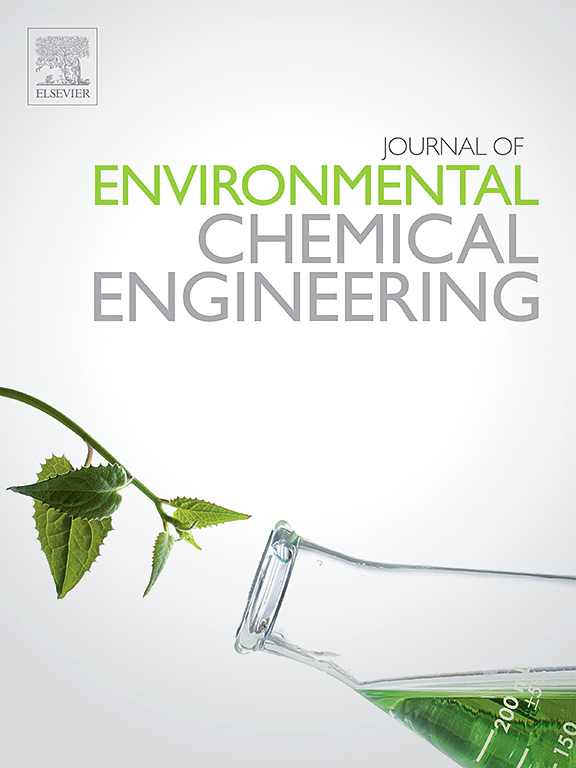The three-dimensional electrocatalytic oxidation system for refractory organic wastewater remediations: Mechanisms, electrode material and applications
IF 7.4
2区 工程技术
Q1 ENGINEERING, CHEMICAL
引用次数: 0
Abstract
Three-dimensional electrocatalytic oxidation (3D-ECO) has garnered significant attention in recent years as an advanced wastewater treatment technology. This paper systematically reviews the oxidation mechanisms, key electrode materials and their reactor designs, operational parameters, and specific applications of 3D-ECO. Compared to traditional two-dimensional electrocatalytic oxidation (2D-ECO) systems, 3D-ECO significantly enhances the reaction interface area and mass transfer efficiency by incorporating particle electrodes (PEs), demonstrating superior pollutant removal capabilities. Furthermore, the use of PEs not only reduces energy consumption but also improves treatment efficiency. This paper also explores the importance of composite materials in enhancing electrocatalytic performance and electrode stability, along with an analysis of the key operational parameters affecting system performance. Despite its excellent performance in terms of current density and energy efficiency, high costs and complex operations continue to limit the industrial application of 3D-ECO. To address these challenges, the paper proposes future research directions, including the development of novel electrode materials, reactor designs, machine learning to optimize operating parameters, and the integration of multiple technologies. Through these efforts, 3D-ECO has the potential for broader application, contributing to the sustainable development of wastewater treatment technologies.
求助全文
约1分钟内获得全文
求助全文
来源期刊

Journal of Environmental Chemical Engineering
Environmental Science-Pollution
CiteScore
11.40
自引率
6.50%
发文量
2017
审稿时长
27 days
期刊介绍:
The Journal of Environmental Chemical Engineering (JECE) serves as a platform for the dissemination of original and innovative research focusing on the advancement of environmentally-friendly, sustainable technologies. JECE emphasizes the transition towards a carbon-neutral circular economy and a self-sufficient bio-based economy. Topics covered include soil, water, wastewater, and air decontamination; pollution monitoring, prevention, and control; advanced analytics, sensors, impact and risk assessment methodologies in environmental chemical engineering; resource recovery (water, nutrients, materials, energy); industrial ecology; valorization of waste streams; waste management (including e-waste); climate-water-energy-food nexus; novel materials for environmental, chemical, and energy applications; sustainability and environmental safety; water digitalization, water data science, and machine learning; process integration and intensification; recent developments in green chemistry for synthesis, catalysis, and energy; and original research on contaminants of emerging concern, persistent chemicals, and priority substances, including microplastics, nanoplastics, nanomaterials, micropollutants, antimicrobial resistance genes, and emerging pathogens (viruses, bacteria, parasites) of environmental significance.
 求助内容:
求助内容: 应助结果提醒方式:
应助结果提醒方式:


